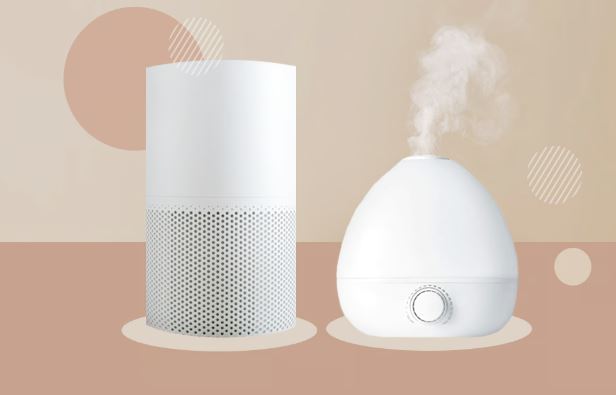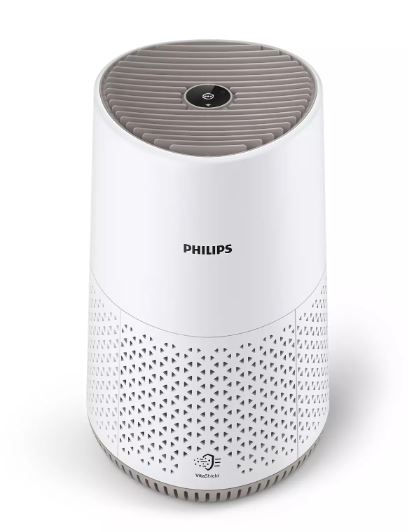Neutralizing Smoke and Odors: Air Purifiers for a Fresh-Smelling Home
Wiki Article
In today's health-focused society, the air quality indoors and out has become an increasingly important consideration for many people. With increasing environmental pollution and a better understanding of the effects of indoor pollutants on our health, it's no surprise that the air purifier market is booming.
Air purifiers are devices that clean the air of pollutants in a space, promoting healthier indoor air. They are ideal for people with allergies, asthma, or other respiratory issues as they can significantly reduce the presence of allergens, pollutants, and irritants in the air. Even healthy individuals can take advantage of air purifiers, as they give added assurance and protect against airborne pathogens.
This comprehensive overview will dive deep into the fascinating realm of air purifiers, examining their advantages, the variety of options on the market, key considerations when making a purchasing decision, and maximizing your air purifier's potential. By the end, you should have a thorough grasp of air purifiers and be able to make an informed decision about whether investing in one is the best option for you and your family.

Decoding Air Pollutants and Their Effects on Well-being
To appreciate the value of air purifiers, it's key to comprehending the types of pollutants they target and the likely impact of exposure to these contaminants.
Indoor air pollutants can be generally classified into three main types:
- Particulate Contaminants: This includes solid and liquid droplets suspended in the air. Examples include pollen, smoke, dust, pet dander, and mold spores, to name a few. Particulate matter can cause respiratory issues and set off allergic responses.
- VOCs: A Concern for Indoor Air: VOCs are gases released by solids and liquids. Sources of VOCs include cleaning agents, paints, aerosol sprays, pesticides, and similar products. Exposure to VOCs can lead to eye, nose, throat irritation, headaches, and stomach discomfort.
- Understanding Biological Contaminants: These include microbes such as bacteria, viruses, mold spores, and mildew. They can cause a spectrum of health concerns, from allergy symptoms to more serious health risks.
The consequences of exposure on human health can greatly vary. For people with respiratory issues or a vulnerable immune system, exposure to indoor air pollutants can lead to serious health issues. For those in good health, long-term exposure to certain pollutants can contribute to the development of respiratory issues and other health problems over time.

The Science Behind Air Purifiers
Air purifiers use a range of physical and chemical mechanisms to capture and remove pollutants from the air. Understanding the underlying principles employed by purifiers will help you appreciate their effectiveness and the array of models on the market.
Here are the key processes and technologies used in air purifiers:
- The Power of Mechanical Filtration: This is the most common method used in air purifiers. It involves using specialized filters to capture particles as air is passed through the filtration system. The filters can be made from various materials, each designed to trap particular particle types. For example:
- Pre-filters: The First Line of Defense: These are usually the first line of defense, trapping bigger contaminants like dust and hair.
- HEPA Filters: The Gold Standard: HEPA filters are remarkably proficient at trapping ultrafine particles, including pollen, dust mites, and some bacteria and viruses. To be labeled a true HEPA filter, it must trap a minimum of 99.97% of particles down to 0.3 microns in size.
- carbon filtration: These filters are designed to effectively remove odors, VOCs, and gaseous compounds.
- The Power of Ionization: Ionizers use electrical charges to create negatively charged ions, which attach themselves to particles in the air. The charged particles are drawn to nearby surfaces or the purifier itself.
- Ozone Generators: Some air purifiers use ozone as a powerful cleaning agent. While effective, excessive ozone exposure carries risks so these types of purifiers should be used with care and only when no one is present.
- UV Light: Shining a Light on Purification: UV light can be used to effectively eliminate bacteria, viruses, and mold. UV light is commonly paired with filtration to eliminate particles, while UV light ensures any remaining biological contaminants are destroyed.
The Ultimate Air Purifier Guide
With a plethora of options available, selecting the ideal air purification system can be a daunting task. It's important to consider a range of criteria to ensure you make the correct choice for your specific needs and space.
Here are some key considerations:
- Considering Room Size: Air purifiers are typically designed for specific areas, so it's important to choose a model that can efficiently purify the air in the designated space. Most purifiers will list a maximum room size or a Clean Air Delivery Rate (CADR), which indicates the amount of purified air circulated per minute.
- Targeted Pollutants: Identify the particular contaminants you want to target. If you suffer from allergies, look for a purifier with a HEPA filtration system. For odor removal, consider a model with a carbon filter. If you're concerned about bacteria and viruses, a purifier with UV light technology might be best.
- Whisper-quiet Performance: Air purifiers can produce a range of noise outputs, so if you plan to use it in a quiet bedroom or tranquil space, look for models with a sleep mode or quiet setting.
- Maintenance and Costs: Consider the ongoing costs and maintenance requirements of the purifier. HEPA filters, for example, typically need to be replaced every 6-12 months, depending on use and environmental factors. Remember to budget for filter replacements when making your choice.
- Smart Innovations: Many purifiers offer smart features like air quality sensors, automatic modes, and Wi-Fi connectivity, allowing wireless control and real-time data. These features can improve your purifier's performance and ease of use.
Unlocking the Full Potential of Your Air Purifier
Once you've made your selection and installed it, there are several things you can do to ensure it operates at maximum efficiency and delivers the maximum benefits:
- Optimal Placement: Position your purifier in an central location, free from obstacles, to ensure optimal airflow. Avoid placing it near open windows or doorways as drafts can impact its efficiency.
- Round-the-clock Operation: For the best results, it's recommended to run your purifier continuously. Many models have energy-saving features or smart modes that adapt to the air quality, so you can maintain healthy air quality while conserving energy.
- Regular Filter Care: Regularly check and replace filters as recommended by the manufacturer. Over time, filters become filled with trapped particles, impacting performance. Set a reminder for filter changes so you don't forget.
- Reducing Indoor Contaminants: Alongside using an air purifier, take steps to limit indoor contaminants. This could include regularly vacuuming and dusting, using natural cleaning products, and minimizing the use of strong chemicals or aerosols. Report this wiki page